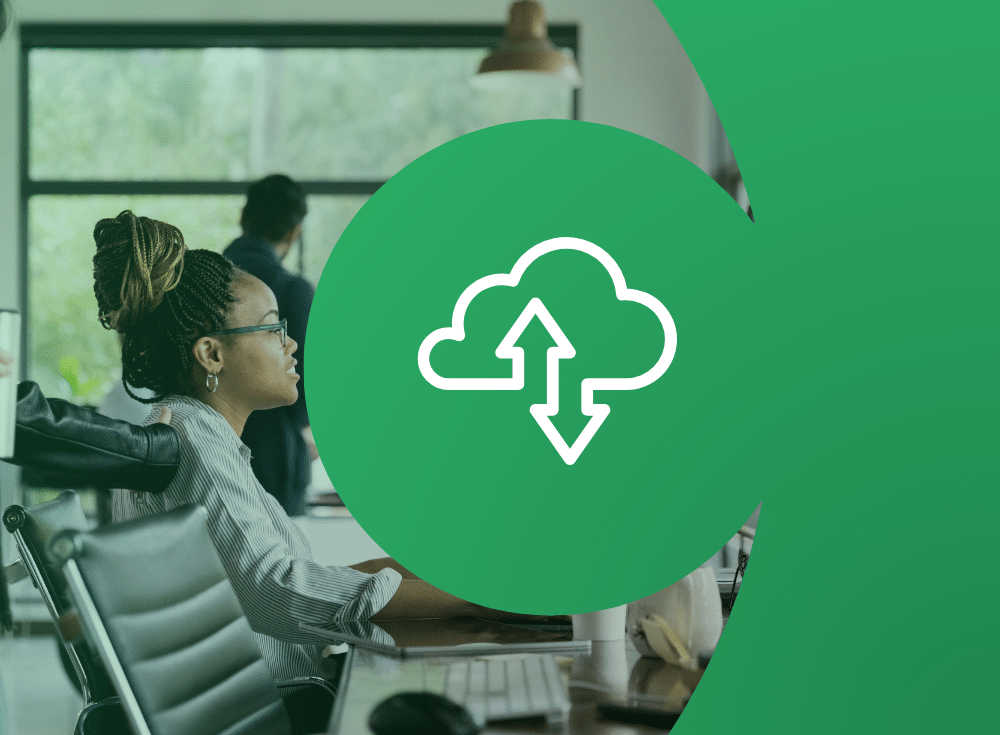Service level objectives (SLOs) are specific, measurable targets or goals that define the expected performance of a service. SLOs typically are placed on a service that form or represent a customer interaction.
First introduced by Google in the SRE Book in 2016, they have become an essential tool for monitoring system health, customer experiences, and understanding whether engineering resources should be invested in reliability or innovation and development. SLOs help teams understand if the service is performing well from the perspective of the customer.
SLO vs SLI
To measure quantitatively whether SLOs are met, a service level indicator (SLI) is used, tracking specific metrics of service health, such as latency, error rates, or availability. SLOs are based on one or more SLIs. We’ve previously written about the relationships between SLOs, SLAs, and SLIs in our blog, SRE Fundamentals: SLA vs SLO vs SLI.
SLO use cases
SLOs can be effective across industries in multiple use cases. Below are a few examples.
- IT: In IT, SLOs are useful for monitoring the availability of applications, tracking how consistently users are able to interact with a site, especially during times of busy traffic.
- Customer service: SLOs can help guarantee a specific response time to errors and customer requests, ensuring user satisfaction.
- Cloud services: SLOs for cloud services could include things like ensuring accessibility, response time to queries, and the level of backend support.
What is a service level agreement (SLA)?
To go into a bit more detail, an SLA is a legally binding agreement between a company and a customer, outlining what service or services the company will provide to the customer and what actions will be taken should the level of service fall short of the agreement. Metrics for this agreement can include things like uptime, latency, throughput, or support response time.
Before entering into a service level agreement, the company should be confident they can provide the level of service they have committed to. The breach of an SLA can have serious impact, resulting in penalties, loss of existing customers, and a tarnished company reputation. SLOs can be used to provide supporting data for SLAs but are also useful in other situations.
Manning book: Platform Engineering on Kubernetes
Learn about open source solutions and the latest best practices from the Kubernetes community
What are error budgets?
An error budget is the amount of allowable poor performance or errors (downtime, slowness, or failure, for instance) over a specific period, as defined by the SLO threshold assigned to an SLI. It involves understanding what is considered acceptable risk in your services—in other words, what level of errors or problems in your application or service are your customers willing to tolerate?
When monitoring SLOs, it is the error budget that is used to set up alerts, not an individual SLI. This helps reduce the noise of less-significant events that don’t seriously impact user experience and helps ensure that alerts are manageable and actionable.
Teams can use error budgeting to make informed decisions about the time and energy they are willing to invest, and whether that investment should be made in reliability of existing service or innovation and development of new services. For instance:
- Should they devote engineering resources toward making service faster, more robust, and more consistent?
- Or should they instead invest in building new features for the customer?
When your error budget is close to being spent or “burned down,” then you know you’re getting close to breaking the SLO and you need to invest engineering resources in fixing the problem/error.
How service level objectives work
Systems and applications generate data and metrics throughout their use, indicating what they’re doing and how well they’re doing it. An SLO uses these metrics to measure performance goals and whether they are being met.
| Measurement is made using a percentage relative to 100%. For example, SLIs could be metrics for availability or latency of key customer transactions, like a checkout service:
SLI = page load latency for checkout service For the SLO, decide what is acceptable for good customer experience for that SLI metric over a given time. For instance: SLO = 95% of page loads are under 200ms for the last 30 days |
| The error budget for this would then be:
5% of page loads can be slower than 200ms. 5% represents the entire error budget, or the buffer you have before the SLO fails and the SLA is violated. |
SLOs ensure that expectations between company and customer are clear and specific. With reliable data, decision-making becomes less subjective and more consistent.
Key components of an SLO
Target level: The realistic and achievable goal, or what defines success. For example, your target could be 99.9% uptime. The SLO target levels represent the performance or reliability a customer expects, and a service aims to achieve. They help ensure customer satisfaction and are often set slightly higher or stricter than an SLA to provide a buffer that gives reaction time for any necessary adjustments.
Measurement: SLOs should have specific, measurable indicators like uptime, error rate, or response time.
Time window: The specific timeframe over which an SLO is measured.
Benefits of SLOs for businesses
Realistic and achievable SLOs come with a host of benefits:
- Enhanced customer satisfaction and trust: The customer-centric measurement SLOs put in place focuses on symptoms rather than causes, ensuring better coverage of customer-impacting issues and reducing false positives.
- Data-driven decision-making for engineering: SLOs provide an objective framework for balancing reliability investments with new feature development, allowing for more consistent risk management.
- Increased operational efficiency and focus: The standardized operational practices SLOs provide mean normalized alerting, dashboards, and operational reviews across the organization, facilitating easier team transitions and on-call rotations.
- Continuous improvement through monitoring data and metrics.
How to set realistic and achievable SLOs
Effective SLOs are defined using these steps:
- Get a full understanding of customer expectations.
- Identify key user journeys and business needs.
- Translate those needs into measurable and clearly defined SLIs.
- Set specific, achievable target values for those SLIs within a defined timeframe.
When defining SLOs, it’s important that historical data and performance metrics are considered. The best SLOs are set using an honest assessment of the services you’ve historically been able to deliver in a realistic timeframe. In this way, you avoid over-promising and under-delivering.
Challenges in implementing SLOs
Adopting SLOs poses several challenges for teams:
- Defining meaningful SLOs that align with customer expectations requires a deep understanding of metrics and monitoring tools, which can be overwhelming.
- Maintaining SLOs across evolving services adds operational overhead and can lead to gaps in coverage.
- Compared to typical threshold-based alerts, which most development teams are accustomed to, responding to SLO burn-rate alerts can be opaque and confusing, contributing to slower mitigation.
- In many of today’s observability platforms, defining SLOs for services that are monitored with open source telemetry, such as OpenTelemetry, can be difficult, if not impossible.
- SLO creation and management becomes even more difficult in high scale microservices environments, such as containerized architectures.
- Teams getting started with SLOs, but without a baseline of how well they are performing in the eyes of their customers, may end up setting unrealistic objectives. This can result in the immediate burning of their whole budget, and can make the initial experience with SLOs a negative and frustrating one. Your organization is at risk of slow adoption.
Best practices for managing SLOs
The importance of SLOs in ensuring customer satisfaction means that managing your SLOs well is essential. Here are a few suggestions for best practices.
- Ensure that all teams are aligned with the set objectives. When the whole team is aware of the objectives of the agreement with the customer, they’re all working toward the same goal.
- Regularly review SLOs to see if realistic improvements can be made, adjusting SLOs over time as your processes mature and improve.
- Monitor metrics and reports to ensure SLIs are being met.
Set a buffer in your error budget to give yourself time to rectify an issue before the SLO terms are missed.
Conclusion: Deciding when to invest
Deciding when to invest in new features vs improving system reliability can be difficult. Without a clear way to quantify reliability impacts, teams often make subjective or inconsistent decisions. SLOs and error budgets provide a consistent, objective way to assess the trade-offs between new feature development and service reliability. Error budgeting allows teams to balance reliability with innovation and helps guide decisions on which to prioritize when.
SLOs help teams understand how well their service is performing from the perspective of the customer’s expectations, which is essential in maintaining customer satisfaction and ensuring that a good relationship will continue.
Chronosphere allows for fast and easy creation and management of your SLOs and the associated error budgets for monitored applications and systems within Chronosphere. Purpose-built for complex microservices environments, Chronosphere SLOs address key challenges typically found in SLO adoption, making creation and management of SLO creation faster and easier.
Frequently Asked Questions
What is a service level objective?
Service level objectives (SLOs) are specific, measurable targets or goals that define the expected performance of a service. SLOs typically are placed on a service that form or represent a customer interaction.
How do I set realistic and achievable SLOs?
To define effective SLOs, start by understanding customer expectations and identifying key user journeys that align with business needs. Then, translate those into clear, measurable SLIs, and set specific, attainable target values for each within a defined timeframe.
What are key components of an SLO?
An SLO includes a target level that defines success—such as 99.9% uptime—representing the performance customers expect and the service strives to meet. It also includes measurable indicators like error rate or response time, and a defined time window over which performance is tracked. Targets are often set slightly above SLA thresholds to allow room for corrective action.
O’Reilly eBook: Cloud Native Observability
Master cloud native observability. Download O’Reilly’s Cloud Native Observability eBook now!




